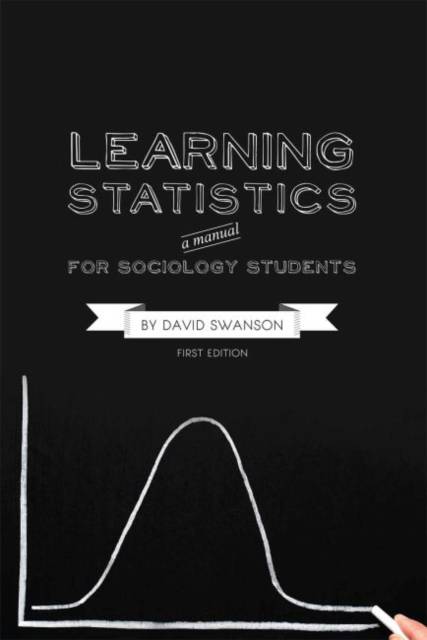
- Afhalen na 1 uur in een winkel met voorraad
- Gratis thuislevering in België vanaf € 30
- Ruim aanbod met 7 miljoen producten
- Afhalen na 1 uur in een winkel met voorraad
- Gratis thuislevering in België vanaf € 30
- Ruim aanbod met 7 miljoen producten
Zoeken
Learning Statistics
A Manual for Sociology Students (First Edition)
David Swanson
Paperback | Engels
€ 177,45
+ 354 punten
Omschrijving
Learning Statistics: A Manual for Sociology Students helps students learn and retain important statistical concepts. New graduates face numerous challenges when applying statistics in the workplace. This text presents a unique and class-tested set of pedagogical tools that increase learning and retention, and prepare students for real-world application. In the real world decisions are often made in conditions of uncertainty. Decision makers examine data generated through scientific sampling, which is a cost-effective means of generating information. This book addresses the selection, use, and interpretation of statistical tools, in conjunction with the presentation of effective results aimed at supporting practical decision-making. In essence, the book is based on the idea that you learn statistics by doing statistics. The approach of Learning Statistics is three-fold. It is computer-based. It assumes that problems are client-driven and create conditions of uncertainty. It is designed with a conceptual umbrella over empirical assignments. Students will achieve key learning outcomes including: - Grasping the conceptual foundation that underlies inferential statistics;
- Understanding basic descriptive and inferential tools within a decision-making framework;
- Selecting appropriate statistical tools, such as graphing, correlation, and simple regression, for specific tasks;
- Using software packages to support data analysis. This comprehensive text addresses major concepts in classical statistics. It serves as a bridge between the classroom and the office. David A. Swanson is Professor of Sociology at the University of California, Riverside. He received his B.Sc. from Western Washington State College, a graduate diploma in Social Sciences from the University of Stockholm, and his Ph.D. In Sociology/Population Studies from the University of Hawai'i. Before becoming an academic, Dr. Swanson worked for state governments in Alaska and Washington, and for companies in the private sector. He became acutely aware of how little college and university graduates knew about statistics, in spite of having good grades in their statistics classes. After entering academia Dr. Swanson developed courses in statistics that improve not only student learning and retention, but future employment possibilities.
- Understanding basic descriptive and inferential tools within a decision-making framework;
- Selecting appropriate statistical tools, such as graphing, correlation, and simple regression, for specific tasks;
- Using software packages to support data analysis. This comprehensive text addresses major concepts in classical statistics. It serves as a bridge between the classroom and the office. David A. Swanson is Professor of Sociology at the University of California, Riverside. He received his B.Sc. from Western Washington State College, a graduate diploma in Social Sciences from the University of Stockholm, and his Ph.D. In Sociology/Population Studies from the University of Hawai'i. Before becoming an academic, Dr. Swanson worked for state governments in Alaska and Washington, and for companies in the private sector. He became acutely aware of how little college and university graduates knew about statistics, in spite of having good grades in their statistics classes. After entering academia Dr. Swanson developed courses in statistics that improve not only student learning and retention, but future employment possibilities.
Specificaties
Betrokkenen
- Auteur(s):
- Uitgeverij:
Inhoud
- Aantal bladzijden:
- 276
- Taal:
- Engels
Eigenschappen
- Productcode (EAN):
- 9781609274795
- Verschijningsdatum:
- 21/11/2011
- Uitvoering:
- Paperback
- Formaat:
- Trade paperback (VS)
- Afmetingen:
- 178 mm x 254 mm
- Gewicht:
- 480 g

Alleen bij Standaard Boekhandel
+ 354 punten op je klantenkaart van Standaard Boekhandel
Beoordelingen
We publiceren alleen reviews die voldoen aan de voorwaarden voor reviews. Bekijk onze voorwaarden voor reviews.











